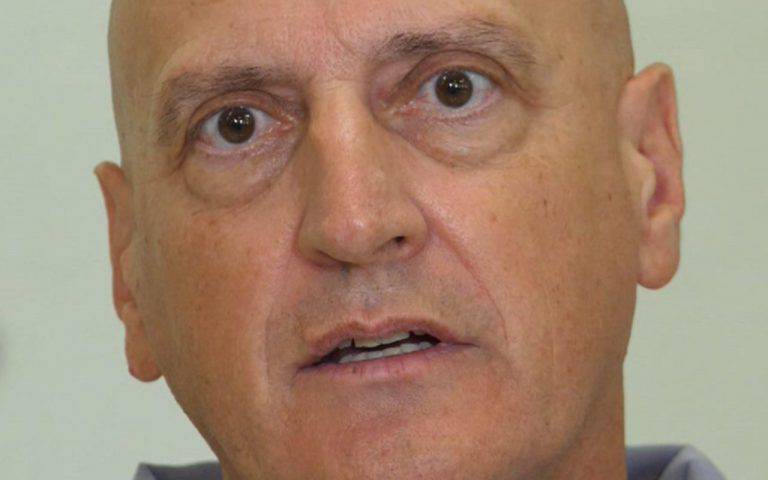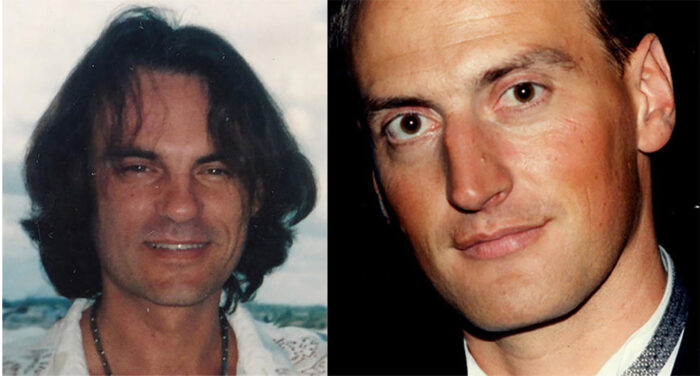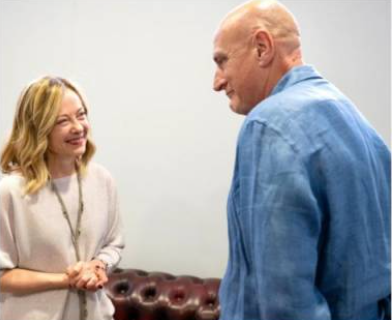
Background
Enrico “Chicco” Forti was a successful Italian television producer and windsurfing champion who moved to Miami, Florida. In 1998, he was accused of murdering Dale Pike, the son of Anthony Pike, with whom Forti was negotiating the purchase of Pike’s failing hotel. Dale Pike was found dead on a beach in Miami, shot twice in the head. Forti was arrested and subsequently convicted of first-degree murder in 2000.
 Dale Pike and Enrico “Chicco” Forti 1988
Dale Pike and Enrico “Chicco” Forti 1988
Forensic Evidence
The forensic evidence presented at Forti’s trial played a crucial role in his conviction. Key points include:
1. Ballistics and Gunshot Residue: Ballistic analysis linked the bullets found in Dale Pike’s body to a gun that investigators argued could be traced back to Forti. Furthermore, traces of gunshot residue were found on Forti’s clothing, suggesting he had recently fired a weapon.
2. Physical Evidence at the Crime Scene: Fibres found at the crime scene were consistent with fibres from Forti’s car. Additionally, tire tracks at the scene matched the make and model of Forti’s vehicle.
Circumstantial Evidence
Circumstantial evidence, while not as direct as forensic evidence, can be compelling when considered collectively. Several pieces of circumstantial evidence pointed to Forti’s involvement in the murder:
1. Motive: Forti had a clear financial motive. He was in the process of purchasing Anthony Pike’s hotel, and the deal was fraught with complications. Dale Pike had expressed concerns about the deal, and his death removed a significant obstacle for Forti.
2. Opportunity: Forti was one of the last people to see Dale Pike alive. Witnesses testified that Forti picked up Dale from the airport shortly before his death. Forti’s presence with Dale in the hours leading up to the murder placed him in a prime position to commit the crime.
3. Inconsistent Statements: Forti provided multiple conflicting statements regarding his whereabouts and actions on the day of the murder. These inconsistencies undermined his credibility and suggested an attempt to cover up his involvement.
Behavioural Evidence
Behavioural evidence also contributed to the case against Forti:
1. Post-Murder Actions: After the murder, Forti displayed behaviour that could be interpreted as indicative of guilt. He made several phone calls that appeared to be attempts to fabricate an alibi. Moreover, his demeanour during police questioning raised suspicions.
2. Relationship with the Victim: Testimonies revealed that Forti and Dale Pike had a strained relationship. Witnesses reported hearing heated arguments between the two, further suggesting a motive rooted in personal animosity.
Witness Testimonies
Several witnesses provided testimonies that implicated Forti:
1. Airport Witnesses: Witnesses at the airport confirmed seeing Forti pick up Dale Pike. This testimony established a timeline that placed Forti with the victim shortly before his death.
2. Business Associates: Associates of Forti and Anthony Pike testified about the contentious nature of the hotel deal. Their testimonies provided context for the financial pressures and potential motives driving Forti.
3. Character Witnesses: While some character witnesses spoke in Forti’s favour, others described him as manipulative and willing to go to great lengths to achieve his goals, including potentially committing murder.
Analysis of the Defence’s Arguments
Forti’s defence argued that he was framed and that the evidence against him was circumstantial and insufficient. They posited alternative theories about other potential suspects, including individuals with criminal backgrounds who might have had motives to kill Dale Pike.
Alternative Suspects: The defence highlighted several alternative suspects, but none had as direct a connection to Dale Pike or as compelling a motive as Forti.
1. Moreover, these theories often lacked substantial evidence and relied on conjecture.
2. Alibi: Forti’s alibi was weak and inconsistent. His attempts to account for his time and whereabouts were contradicted by witness testimonies and physical evidence.
3. Forensic Evidence Challenges: The defence questioned the integrity of the forensic evidence, suggesting potential contamination or misinterpretation. However, these claims were not substantiated by credible expert testimony or alternative analyses.
Conclusion
The conviction of Chicco Forti for the murder of Dale Pike rests on a combination of forensic evidence, circumstantial evidence, and witness testimonies. While the case has its complexities, the weight of the evidence points to Forti’s guilt. The forensic links, combined with Forti’s motive, opportunity, and inconsistent statements, create a compelling narrative of his involvement in the crime.
It is essential to acknowledge that the criminal justice system must uphold the highest standards of evidence and fairness. In Forti’s case, multiple appeals and reviews have affirmed the conviction, suggesting that the judicial process was thorough and just. While public opinion may sway towards sympathy for Forti, the legal evidence underscores the validity of his guilt in the murder of Dale Pike.
As with any high-profile case, ongoing scrutiny and analysis are crucial. However, based on the evidence presented at trial and subsequent judicial reviews, the conviction of Chicco Forti for the murder of Dale Pike remains justified.
Criticism of Prime Minister Giorgia Meloni’s Meeting with Chicco Forti
Prime Minister Giorgia Meloni’s decision to meet with Chicco Forti as if he were an innocent man has sparked significant controversy and criticism. This move has been seen as undermining the repatriation agreement between the United States and Italy, and it has had serious implications for media access and public perception of Forti’s case.
By meeting with Forti and giving him a platform, Prime Minister Meloni has inadvertently glorified a convicted murderer, casting doubt on the judicial process that led to his conviction. This action not only disrespects the verdict of the U.S. courts but also sends a dangerous message about the integrity of legal proceedings and the importance of respecting international legal agreements.
The repatriation agreement between the United States and Italy is founded on mutual respect for each country’s judicial systems. By treating Forti as if he were innocent, Prime Minister Meloni has jeopardized this agreement, potentially complicating future repatriation cases. The message sent to both the American and Italian public is that political influence can override legal decisions, which undermines the rule of law.
Moreover, the media access granted to Forti has allowed him to present his narrative unchallenged, further eroding public trust in the judicial process. This media exposure has given Forti a platform to portray himself as a victim, despite the substantial evidence supporting his guilt. Such glorification of a convicted murderer is not only insensitive to the victim’s family but also harmful to the pursuit of justice.
It is crucial to emphasize that the U.S. courts have jurisdiction over Forti’s case. Any attempt to clear his name must go through the proper legal channels in the United States, not through political manoeuvring or media campaigns in Italy. The behaviour of the Italian Prime Minister in this regard has been erroneous and counterproductive, casting doubt on Italy’s commitment to upholding international legal standards.
In conclusion, Prime Minister Giorgia Meloni’s meeting with Chicco Forti as if he were innocent has had damaging repercussions. It has undermined the repatriation agreement between the United States and Italy, provided unwarranted media access to a convicted murderer, and sent a misleading message about the authority of U.S. courts. To truly respect the rule of law and international agreements, it is essential that any efforts to address Forti’s case be conducted within the appropriate legal framework, respecting the jurisdiction of the U.S. courts.
GIOVANNI DI STEFANO
01/06/2024
www.studiolegaleinternazionale.online
Email gdistefano1955.2@gmail.com
Tel +39 329 627 4773


